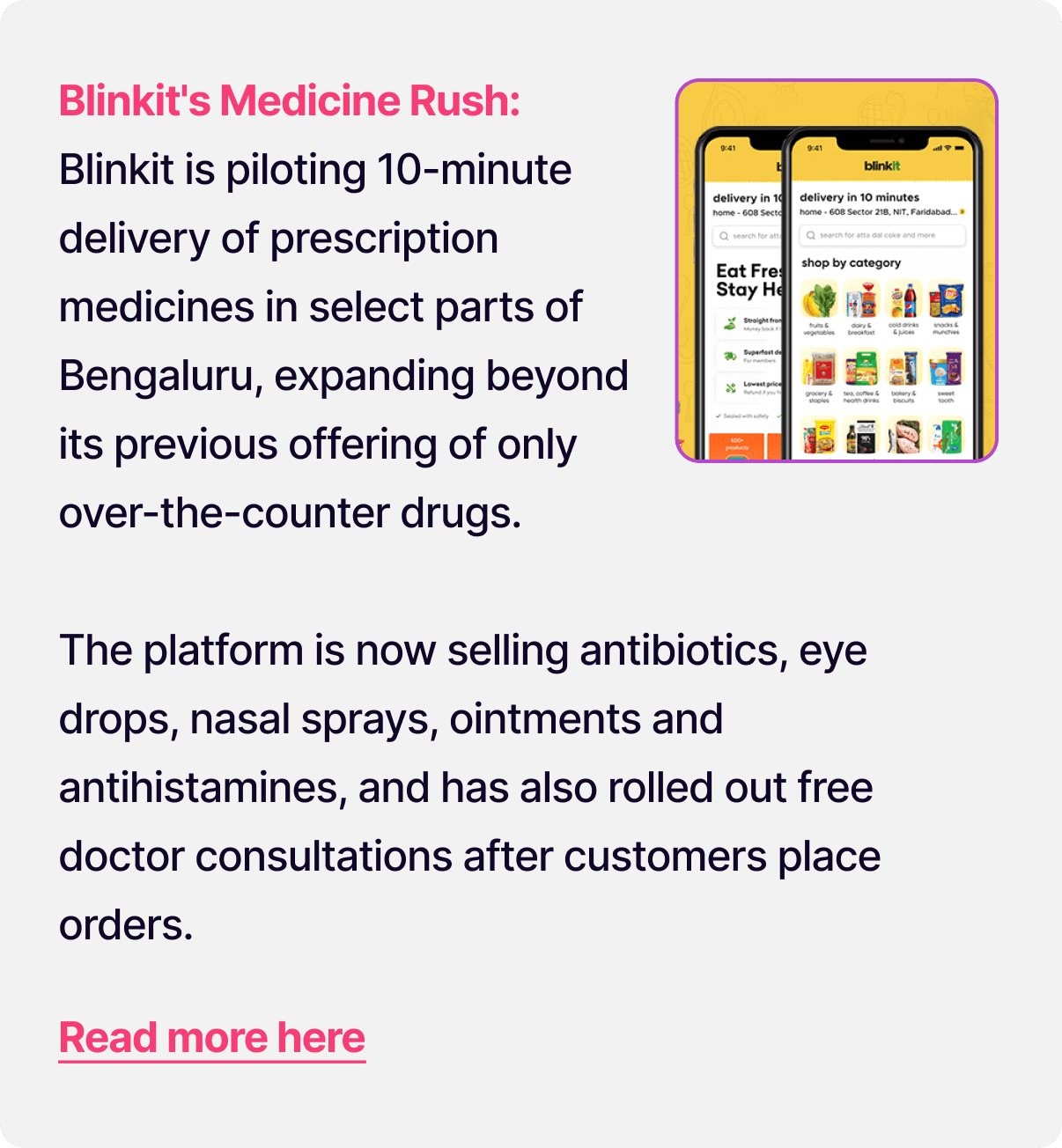- Merito
- Posts
- The ₹3.2 crore RTO problem eating your profits
The ₹3.2 crore RTO problem eating your profits
The sharpest D2C news that matters
D2C x RTO
Hey readers,
Welcome to the fifth edition of D2C Cents!
TLDR: We are your scroll-friendly, no-fluff download of what's shaping India's D2C brands.

This edition? We talk about:
The ₹3.2 crore RTO problem eating your profits (and how to solve it)
The sharpest D2C news that matters
Before we dive deeper, we are happy to share that Merito now powers analytics for 600 D2C brands. Something beautiful in helping founders build better with faster, data-driven decisions.
Talking of helping founders…Let's get started with today’s edition.


Although an inevitable part of the business, every 'address galat hai' costs you twice: once for shipping out, once for shipping back.
We are talking of a silent profit killer that turns every "Order Confirmed!" into a potential "Cash Burned!". RTO!
A lot of brands bleed money to it and probably don't even realise it can be solved.(or at least reduced substantially)
But what are the root causes behind RTOs? Logistics or Customer-behaviour?
Turns out, it's both. But more importantly, they're completely different problems requiring completely different solutions.
Time to figure it out!
The RTO Economics: What Each Failed Delivery Actually Costs
Let's look at the math (based on approximations):

Here’s what it looks like for a ₹10 crore annual revenue brand with 25% RTO rate:
Annual RTO loss: ₹2.5 crore
Working capital blocked: ₹50 lakh perpetually
Customer lifetime impact: ₹75 lakh in future revenue
That's ₹3.25 crore annual damage. Enough to probably fund a year's marketing budget.
The Two-Headed RTO Monster
Here's what I discovered...
1. COD RTOs: The Cash Collection Nightmare (15-45% RTO rates)
Cash on Delivery isn't just a payment method. It's a commitment-free trial that your customer gets at your expense.
When someone orders something online and chooses COD, what's really happening in their mind?
They're saying: "Let me see this product first, then I'll decide if I want to pay."

The COD consumer psychology: Easy to refuse when no money is at stake
But here's where it gets interesting. Prepaid orders fail for completely different reasons.
2. Non-COD RTOs: The Address & Availability Problem (8-18% RTO rates)
When customers pay upfront, they want their orders. The failure points shift entirely.

The prepaid psychology: Money paid = strong intent to receive, but logistics gaps cause failures.
It’s tough to solve both problems with the same strategy!
Fraud Management: How to Spot Fishy Orders Before You Ship
The smartest D2C founders I know don't just ship and pray. They've learned to identify suspicious patterns and verify before they dispatch.

How to verify?
Automate systems that flag suspicious orders
Customer service calls within 2 hours of order placement
Confirms order details, delivery address, and cash availability(before delivery)
Record conversation notes for future reference (customer telling you about Sharma uncle ki shop ke opposite blue gate)
Ship only after positive confirmation
Brands doing this can easily reduce COD RTOs by 25-30%.
But the real magic happens when you implement a systematic approach.
The 3-Step RTO Reduction Playbook
After studying what works across dozens of successful D2C brands, I found a pattern.
The winners follow an approach that tackles the problem at different levels.
Step 1: Reduce COD Dependency (Target: 40% to 20% COD mix)
This step is quite obvious, but many brands don’t make the most out of it. You need to make prepaid so attractive that choosing COD feels like leaving money on the table.

Social Proof + Trust Building:
Your brand and product need more credibility.
Real customer photos (not stock images)
Video reviews from actual buyers
Location-specific testimonials
"Bought by 2,847 people in Mumbai this month" pop-ups
Founder story videos prominently displayed
Quality certifications and partnership badges
Step 2: Pre-Delivery Verification (Target: 30% RTO reduction)
This is where technology becomes your best friend. Most brands winning at RTO reduction have invested in smart verification systems.

Some D2C brands have quietly started using AI systems from their existing partners.
Delhivery's Smart Predict AI is now analyzing 50+ data points per order (like Customer's past delivery behaviour, Pincode-specific success patterns, Time-of-day delivery preferences)
They are even looking at weather data that affects delivery success!
Similarly, Razorpay's Magic Checkout AI goes beyond payments and looks at:
Real-time fraud scoring during checkout
Automatic COD restrictions for risky customers
Step 3: Smart Order Routing (Target: 25% RTO reduction)
The final piece is treating different orders differently based on risk levels. Not all orders are created equal.

What really convinced me that this approach works? Real case studies from brands that nailed it.
Case Studies: Learning from the Winners

Results: COD percentage dropped within weeks (and that was not even what they were solving)
The genius here was to align incentives. Both the delivery partner and customer had reasons to avoid cash.

Results: Insider members had lower RTO rates than regular customers.
The psychology is simple but powerful. When customers have something to lose, they think twice before refusing delivery.
Bonus Case Study - Amazon and Flipkart
Marketplaces have solved the issue of cancellations due to product price drops/discounts with a simple yet effective strategy.
To prevent users from cancelling because of price drops, they simply removed the users who have placed orders in the last 15 days from the remarketing cohort to ensure they do not get price drop ads. Simple yet effective!
Actionables for D2C founders:
Create checkout flows that incentivizes prepaid orders
Talk to your logistics partner to create win-win scenarios for successful deliveries
Create a simple loyalty points system where points forfeit on RTO
Offer points-based exclusive access to new products and early bird discounts
Ensure your remarketing campaigns target the right set of customers.





